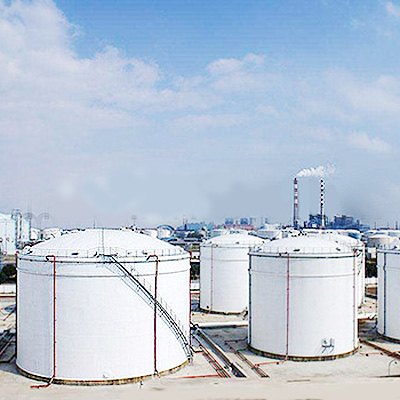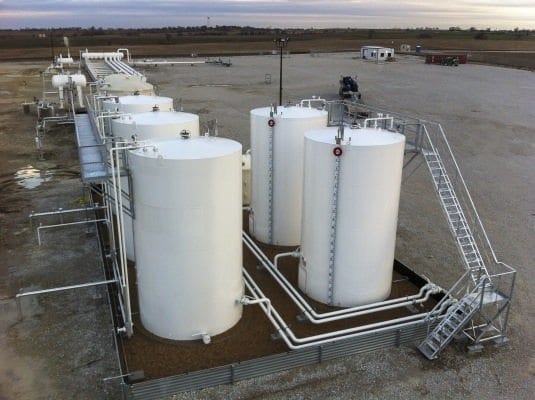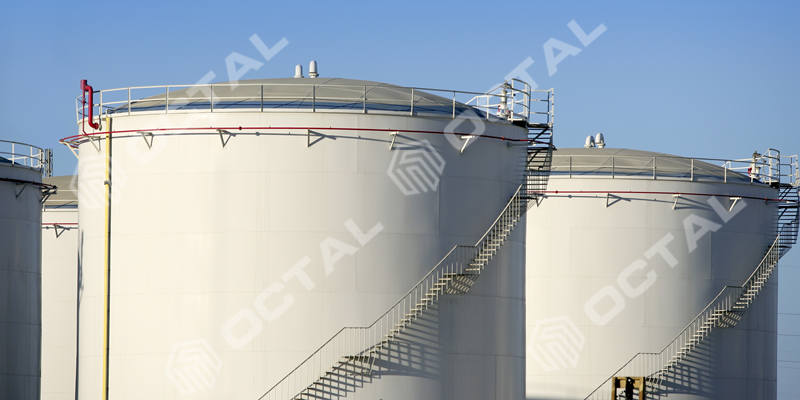Contemporary Techniques Used in API 650 Welding Inspection for Better Accuracy
Wiki Article
How Welding Examination Functions: A Comprehensive Guide for Professionals
Welding inspection plays a crucial role in guaranteeing the safety and security and dependability of bonded structures. It entails a systematic technique that includes both visual examination and advanced testing techniques. Professionals should familiarize themselves with crucial standards and laws regulating the sector. Understanding the typical issues that can arise during welding is essential. This guide will discover these elements carefully, giving understandings right into the procedures that maintain top quality and honesty in welding.Comprehending the Significance of Welding Inspection
While many may ignore the value of welding examination, it plays a crucial duty in guaranteeing the honesty and security of welded frameworks. Efficient welding evaluation recognizes possible problems and problems that can compromise structural stamina and result in tragic failures. The examination process encompasses various strategies, such as aesthetic evaluations, ultrasonic testing, and radiographic evaluations, each adding to the overall evaluation of weld quality.
Along with protecting the architectural integrity, welding examination ensures conformity with sector criteria and customer specifications. By ensuring that welds satisfy needed attributes and resistances, evaluations assist maintain the integrity and long life of elements in various applications, from building to aerospace. An extensive assessment procedure cultivates a society of quality and accountability among welders and suppliers. Inevitably, welding evaluation is not simply a procedural step; it is a vital technique that underpins the security and performance of engineered systems throughout varied markets.
Secret Criteria and Rules in Welding Examination
The foundation of reliable welding inspection rests on adherence to developed standards and regulations. Different organizations, such as the American Welding Society (AWS) and the American National Criteria Institute (ANSI), stated standards that assure high quality and safety in welding techniques. Secret standards, such as AWS D1.1 for structural welding and ASME Area IX for stress vessels, give detailed criteria for welding evaluations, treatments, and certifications. Regulative structures, including those from the Occupational Safety And Security and Wellness Management (OSHA), required safety methods and employee protections in welding atmospheres. Conformity with these criteria is important for attaining consistent weld high quality and reducing the risk of failures. In addition, international criteria like ISO 3834 even more enhance international consistency in welding inspection practices. Specialists must stay informed concerning these regulations to ensure that their assessment approaches align with market expectations and lawful demands, therefore safeguarding both personnel and architectural stability.Initial Prep Work and Aesthetic Assessment Techniques

Reliable welding assessment begins with a detailed pre-inspection checklist that assures all required problems are met prior to the real evaluation happens. Following this preparation, aesthetic problem recognition plays a vital duty in assessing weld top quality, allowing examiners to detect issues such as fractures or improper fusion. With each other, these strategies form the structure for an effective welding evaluation procedure.
Pre-Inspection Checklist
Before starting any kind of welding evaluation, a detailed pre-inspection list is important to assure that all needed preparations are completed and that visual assessment techniques are effectively utilized. Secret aspects of this list consist of confirming the welding treatment specification (WPS), making certain all devices is adjusted and in good working condition, and confirming that the inspector possesses the needed qualifications. In addition, it is vital to evaluate any type of previous assessment reports and to evaluate the workplace for security dangers. The examiner must likewise confirm that all appropriate paperwork, such as material certificates and inspection documents, is conveniently offered. Finishing this checklist helps to establish a solid structure for an effective examination procedure, improving the dependability of the results obtained.Visual Issue Recognition
An effective visual defect recognition process starts with cautious initial prep work and the application of well established visual inspection strategies. Examiners need to guarantee that the welding area is well-lit and tidy, as ample visibility is essential for discovering problems. An extensive examination of the weld joint's surface area allows for the recognition of suspensions, such as splits, undercuts, or porosity. Assessors typically make use of tools like multiplying glasses or mirrors to enhance their view of hard-to-reach locations. Additionally, they must know with the particular welding criteria and guidelines appropriate to the task. By adhering to these techniques, assessors can effectively determine possible concerns, protecting the stability of the weld and conformity with industry standards.Non-Destructive Screening Approaches: An Overview
Non-destructive testing (NDT) techniques play an essential role in the welding evaluation procedure by making certain the integrity and reliability of welded structures without triggering any kind of damages (API 650 Welding Inspection). These strategies allow inspectors to assess the high quality of welds while protecting the parts being examined. Common NDT techniques consist of ultrasonic screening, radiographic screening, magnetic fragment screening, and color penetrant screening, each offering one-of-a-kind benefitsUltrasonic screening uses high-frequency acoustic waves to detect interior imperfections, while radiographic screening uses X-rays or gamma rays to picture the interior structure of welds. Magnetic bit testing reveals surface and near-surface defects by applying my latest blog post a magnetic area and iron fragments to the weld location. Color penetrant testing highlights surface-breaking defects through the application of a colored color. With each other, these NDT approaches give crucial insights into weld top quality, enabling specialists to make enlightened choices pertaining to safety and security and conformity in welding applications.
Usual Flaws and Their Ramifications
Determining common defects in welded joints is crucial for preserving structural integrity and safety and security. Different problems can arise throughout the welding process, each lugging prospective implications for the overall performance of the framework. Porosity, identified by tiny gas pockets within the weld, can damage the joint and jeopardize its load-bearing capacity. Splits may create because of thermal stress or inappropriate cooling, leading to prospective failure under anxiety. Incomplete blend occurs when the weld steel does not fully bond with the base product, resulting in weak joints that might not endure desired loads. Damaging, where the base metal is deteriorated, can likewise lower the efficient cross-section of the weld. In addition, extreme support can produce stress and anxiety concentrations that can lead to failure. Identifying these problems immediately permits restorative actions, guaranteeing the long life and reliability of welded frameworks in important source vital applications.Devices and Equipment Utilized in Welding Inspection
Effective welding assessment depends on a variety of specialized tools and devices to assure the quality and stability of bonded joints. Crucial instruments consist of aesthetic assessment tools, such as magnifying glasses and borescopes, which enable assessors to very closely examine welds for surface flaws. Non-destructive screening (NDT) approaches, such as ultrasonic screening, radiographic screening, and magnetic fragment screening, are basic for recognizing inner flaws without damaging the product.Dimension devices, consisting of calipers and weld determines, aid analyze measurements and ascertain conformity with requirements. In addition, firmness testers examine the mechanical residential or commercial properties of welded joints. Individual safety devices (PPE) is likewise critical, safeguarding the safety and security of examiners while operating in potentially hazardous settings (API 650 Welding Inspection). Each device serves a particular purpose, jointly improving the effectiveness of welding examination and adding to the integrity of completed projects
Regularly Asked Concerns
What Certifications Are Needed to Come To Be a Welding Examiner?
To become a welding assessor, people usually need pertinent qualifications, such as AWS CWI or CSWIP, together with experience in welding procedures, engineering principles, and understanding of evaluation techniques, safety and security requirements, and applicable codes.Just How Typically Should Welding Inspections Be Conducted?
Welding inspections must be conducted regularly, preferably at various task stages, consisting of pre-weld, during-weld, and post-weld. Regularity may additionally depend on sector standards, task specifications, and the intricacy of the welds involved.Can Welding Defects Be Repaired After Examination?

Yes, welding flaws can often be repaired after evaluation. Depending upon the extent and kind of problem, suitable techniques such as revamping or added welding might be used to recover architectural integrity and safety compliance.
What Industries Require Routine Welding Assessments?

Different markets, including building, manufacturing, aerospace, and automobile, need routine welding evaluations - API 650 Welding Inspection. These examinations ensure adherence to security standards and quality assurance, minimizing threats connected with architectural stability and operational efficiency in bonded parts
Exactly how Do I Select a Welding Assessment Solution?
To select a Visit Website welding evaluation service, one need to take into consideration credentials, experience, accreditations, and industry credibility. Additionally, reviewing client reviews and guaranteeing the solution meets pertinent requirements can help assure high quality evaluations and dependable results.
While numerous might ignore the value of welding evaluation, it plays a crucial function in making certain the integrity and security of bonded structures. Secret criteria, such as AWS D1.1 for structural welding and ASME Section IX for stress vessels, provide complete criteria for welding treatments, examinations, and qualifications. Efficient welding inspection starts with an extensive pre-inspection checklist that ensures all needed problems are fulfilled prior to the real inspection takes place. Before commencing any welding evaluation, a comprehensive pre-inspection list is necessary to assure that all essential preparations are completed and that visual evaluation methods are properly used. Non-destructive screening (NDT) techniques play a necessary function in the welding evaluation process by guaranteeing the integrity and reliability of bonded frameworks without triggering any type of damage.
Report this wiki page